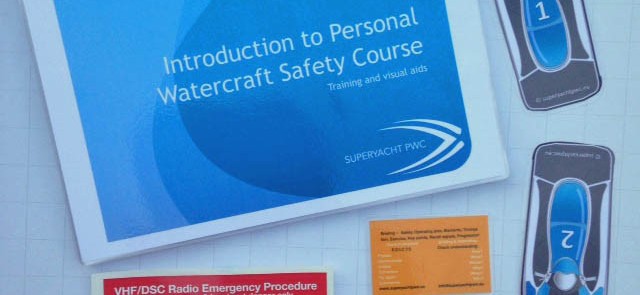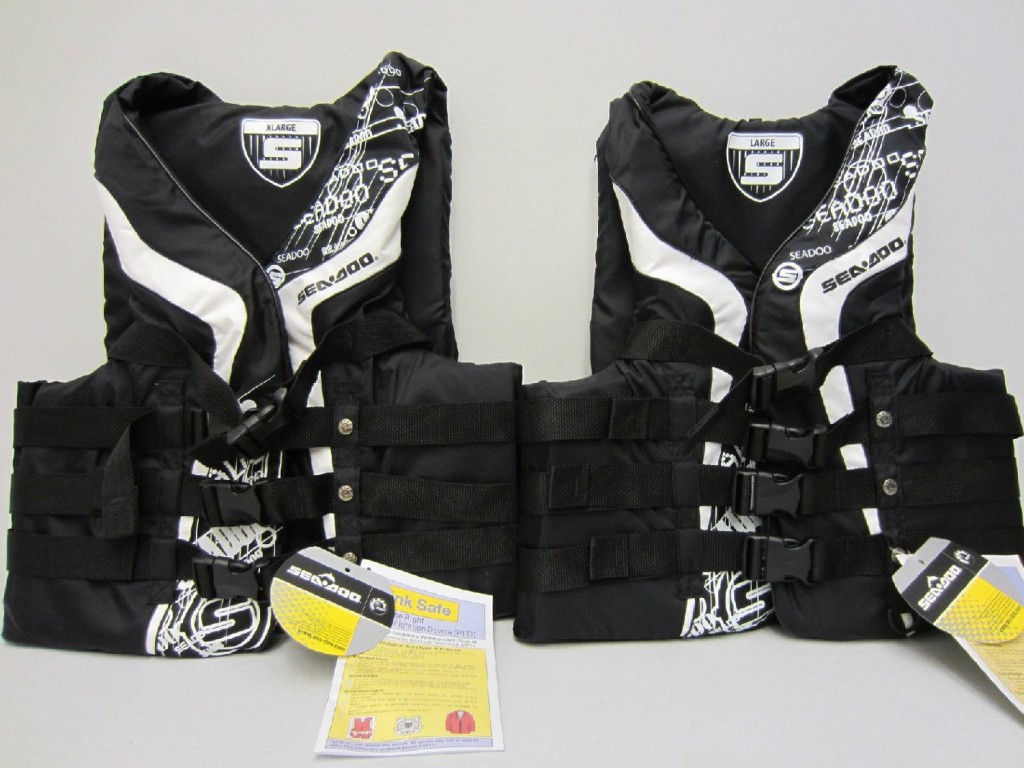Jet Ski Safety – A Complete Guide to PWC Safety
Jet Ski Safety – When most people think of water sports the Jet Ski is often first on the list. Ever since the Jet Ski was first introduced by Kawasaki in 1972, it has become the premiere personal watercraft for millions of people around the world. The simple design combined with a powerful engine makes this mode of personal water transportation one of the most fun and enjoyable ways to enjoy rivers, lakes and the ocean.
However, while the Jet Ski is easy and intuitive to operate, you must still follow strict safety rules and regulations to ensure that your good time does not end up becoming a tragedy. This means following the Personal Watercraft or PWC water safety rules and regulations so that you can have a great time and minimize accidents from occurring.
Operating a personal watercraft on open water involves a different set of safety rules and regulations as compared to driving a vehicle on the roadways. However, the same common sense principles apply as you must stay alert with a clear head so that you can react to potentially dangerous situations.
Even out on the open water, there are circumstances which may occur that can threaten your safety. By taking into account the following Jet Ski safety checklist and Jet Ski safety tips, you can stay safe on the water.
Jet Ski Safety Checklist
If you have never ridden a Jet Ski before, then you should be prepared for a thrilling ride. A Jet Ski is a device that can really fly on the water and create a great deal of excitement on each and every trip. However, it is also a very powerful machine that can cause accidents to happen if you are not careful. So, before you purchase and start riding a Jet Ski, it is very important that you follow a safety checklist first to be fully prepared.
Ride a Jet Ski Before You Buy It: The best way to experience the thrills of this personal watercraft is to ride as a passenger on one with an experienced rider. This way, you get a good idea of what the experience is like so that you can be prepared when you purchase your own Jet Ski. The good news is that it the learning curve is quite short and you may even switch with the driver on your first ride just to get a good feel of what it is like.
Read the PWC Water Safety Rules: Don’t worry, you are not studying for a test, but rather reading up on the general water safety rules when it comes to operating a personal watercraft. Most of the rules are common sense, but there may be a few rules you were not aware of, so it pays to be safe and go over the rules ahead of time
Read the State and Local Rules and Regulations: Each state has its own rules and regulations about operating personal watercraft. The same applies for the various bodies of water in which you might consider taking your Jet Ski. So, you will need to know the following:
- Is a license required?
- If personal watercraft are allowed in a particular body of water
- What specific PWC water safety rules and regulations apply
- Are there set times in operating such craft?
- Is there specific equipment requirements?
There may be other rules and regulations as well, so keep that in mind when you are looking over the general rules. Basically, if you have the proper gear and operate the craft in a safe manner you should be fine.
Get the Proper Safety Gear: Unlike riding a motorcycle, you will need far less gear to ride a Jet Ski. However, a life jacket is highly recommended, if not required by the local authorities.
Jet Ski Safety Tips
Now that you have your checklist completed, it is time to start riding your Jet Ski. The good news is that Jet Skis are easy to transport and can be placed in the water just like a small boat or craft. Starting your adventure on one of these personal watercraft is just like when you first started riding a bike. You’ll need to take it a bit slow at first until you get a feel of how this particular craft operates.
As you gain in confidence, you will naturally start to pick up speed and test out the Jet Ski to its limits. However, before you decide to tear off into the water, it pays to take heed of these simple safety tips that will help keep you protected.
Understand the Safety Precautions on the Jet Ski: It certainly pays to know how to stay with your watercraft in case you lose control. In most cases, you will need to attach a lanyard to your wrist which is then attached to the handlebars. This creates what is known as a “kill switch” which automatically shuts down the Jet Ski just in case you fall off. Otherwise, the Jet Ski will keep going and may create a dangerous situation for swimmers and boaters in the area.
Wear a Life Jacket: There is no substitute for having a life jacket. While it may ruin your tan line, that is what spray tan products are designed to cover. Even if you are an expert swimmer, a life jacket can save you if you become unconscious or are otherwise incapacitated. Life jackets are designed to be flexible enough to allow you to move as needed and you will not get hot while roaring through the water. So, wear a life jacket.
A helmet is generally not necessary for Jet Ski safety as there is little danger of a concussion while riding in open water. However, if you are operating the Jet Ski amid the trees or a location where there are large boulders or other obstacles which may cause injury if the rider should fall off, then a helmet might be warranted.
Do not Consume Alcohol: While some might think that riding out on the open waves means that there is nothing to hit, the truth is that being on a Jet Ski even at low speeds will require the ability to react quickly to sudden events. This means that consuming alcohol increases the risk of an accident occurring, even if you just had a couple. Being intoxicated means being distracted and a distracted driver is one that is far more likely to get injured.
Be Alert: It is very easy to get caught up in the moment and not pay attention to your surroundings. This is especially true if you are travelling at high speeds. While you cannot anticipate every danger, you should stay alert for things that might pop up in the water or cross your path so that you can be better prepared. You should keep track of the boats, jet skiers and swimmers that may be nearby and might cross your path.
So, the best move is to try and put as much open space between you and everyone else. Keep your speed down in areas where other boats, skiers, divers and swimmers might be so that you can react faster.
Do not Become Overconfident: Just because you know how to handle your machine and have built up some experience does not mean that you know everything. For example, a passing motorboat will create ripples in the water that you may think can be used as a launching ramp. Unfortunately, such ripples may instead cause your Jet Ski to fly off in an unanticipated direction or worse, go upside down and leaving you under the water.
When pulling an inner tube (or tubing) from behind a PWC watercraft it is ALWAYS important to remember to have a spotter on the rear end of the PWC to monitor and ensure the safety of the riders trailing behind. This will ensure proper Jet Ski safety.
When out on open, smooth water that is well away from any potential collision, go ahead and open up the Jet Ski if you have the confidence. However, in virtually all other situations you’ll want to exercise more control and not get too greedy when it comes to operating your personal watercraft.
Above All, Stay Safe
When it comes to operating a Jet Ski and Jet Ski safety, the first rule is to stay safe so that you can avoid any harm. Every year, there are injuries and even occasional deaths associated with operating a jet ski, though such instances are very few and far between. While accidents are relatively rare, they most often happen when the operator is unaware of their surroundings, has been consuming alcohol or is not wearing the proper safety gear.
So, if you are considering operating a Jet Ski, it pays to do a little research and get the right gear so that you can be safe out on the water. The more you know about PWC water safety and what it takes to keep safe while on your Jet Ski, the more fun you will have out on the water.















